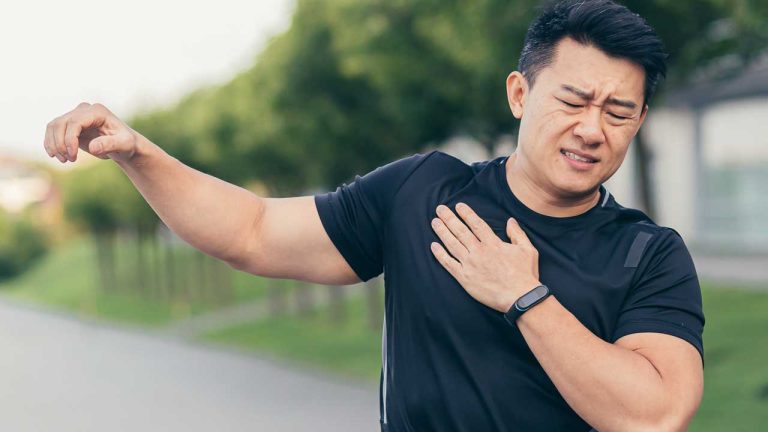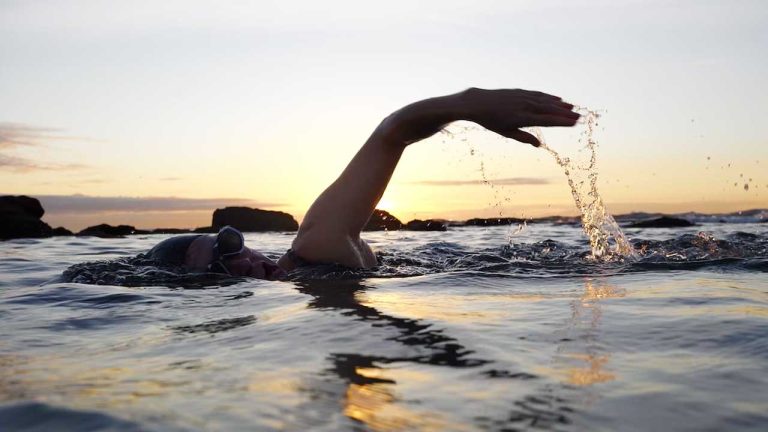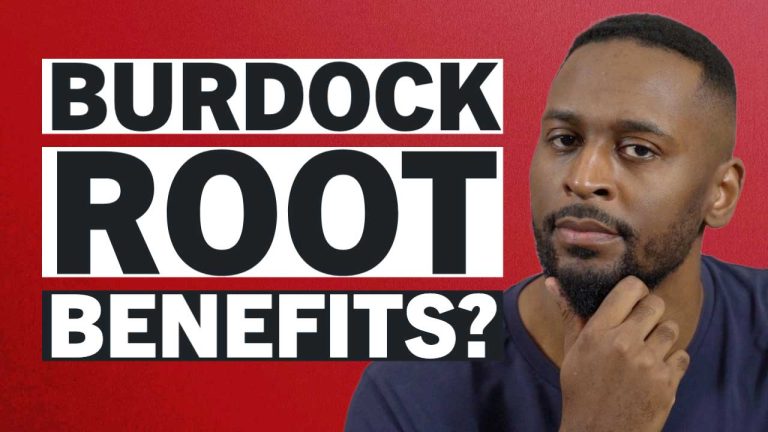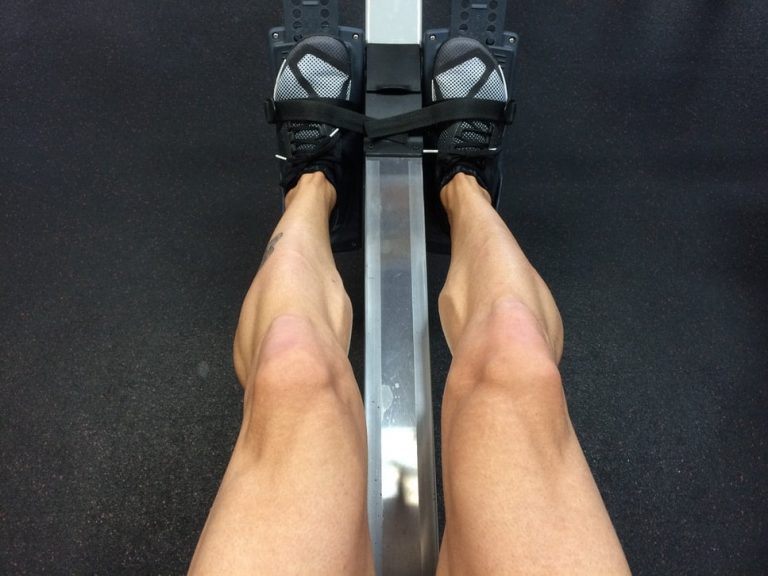How to Recover from DOMS Faster: Top Tips for Speedy Relief

ListedFit is reader-supported. When you buy through links on our site, we may earn a small commission.
Delayed Onset Muscle Soreness (DOMS) is a common phenomenon experienced by many after strenuous or unaccustomed physical activity.
This muscle pain and stiffness, also known as “muscle fever”, is caused by temporary microtears and inflammation in the muscles.
While DOMS can be frustrating for fitness enthusiasts and athletes alike, there are ways to speed up recovery and get back to your usual activities in no time.
Quick Summary

In this article, we’ll explore various techniques and remedies to help you recover from DOMS faster, from the importance of rest and recovery to the role of nutrition and supplements in muscle repair.
We’ll also share some stretching and massage practices, as well as other potential treatments to alleviate pain and discomfort related to DOMS.
Key Takeaways
- Understand the causes and importance of recovery in DOMS
- Explore effective techniques for faster healing, such as nutrition and stretching
- Learn about supplements and additional treatments for DOMS relief
Contents
Causes of DOMS
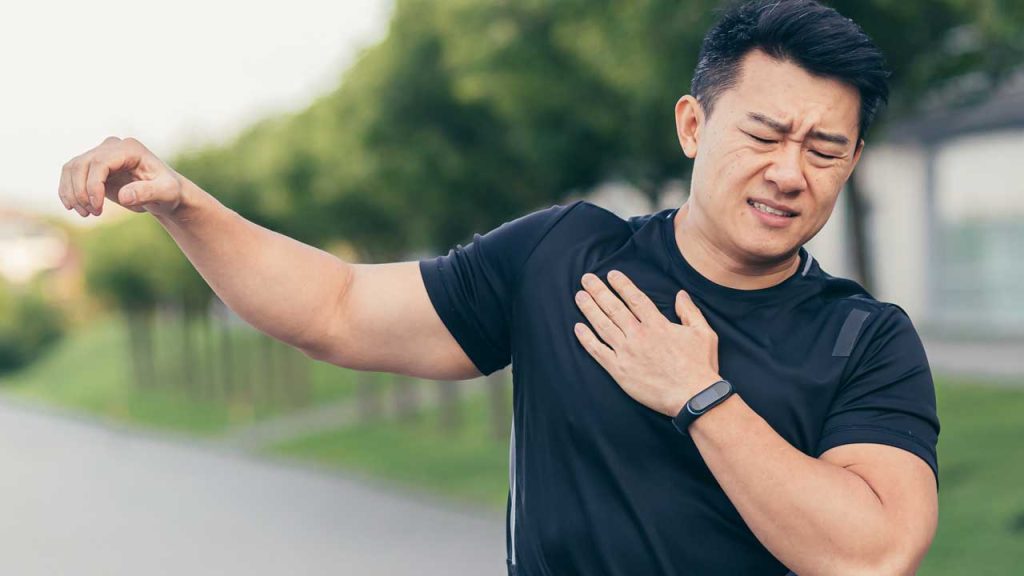
So, you’ve just finished an intense workout and now you’re feeling that dreaded muscle soreness. This is a common sign of Delayed Onset Muscle Soreness (DOMS) and it can make your post-exercise days a bit uncomfortable. But what actually causes DOMS? Let’s dive into it.
First of all, DOMS is often a result of strenuous or unaccustomed activity. When you push yourself hard or try out a new exercise, it can lead to microscopic tears in your muscle fibres. These tiny tears create a natural response by your body involving inflammation and pain signals. That’s why you feel sore after a workout.
DOMS is mainly caused by muscle damage as a result of high-intensity, unfamiliar or eccentric exercises, and increased training volume. As you continue to exercise your body will adapt to these various stressors and the soreness will subside.
One key factor that contributes to DOMS is the intensity of your exercise. When you participate in high-intensity workouts, this puts more stress on your muscles which may lead to muscle damage and increased inflammation. The more challenging your workout is, the greater the likelihood of experiencing DOMS.
Eccentric exercises, in particular, are commonly associated with DOMS. These types of exercises involve the lengthening of muscles under tension, like when you’re lowering weights or running downhill. Eccentric exercises place your muscles under more strain, which is why they’re more likely to cause soreness.
It’s also worth noting that the volume of your training plays a major role in DOMS. When you increase the number of repetitions or sets in your workout, you’re essentially pushing your muscles beyond their usual capacity. This ultimately results in muscle damage and increased soreness.
Importance of Rest and Recovery
When dealing with DOMS, it’s essential to understand the importance of rest and recovery. Giving your body time to heal will not only help you bounce back faster but also ensure you avoid over-training and burnout.
First and foremost, make sure you’re getting enough sleep. Sleep is a crucial part of the recovery process, as it allows your muscles to repair and grow. Aim for at least 7-9 hours of quality sleep each night, and consider napping during the day if you’re feeling particularly fatigued.
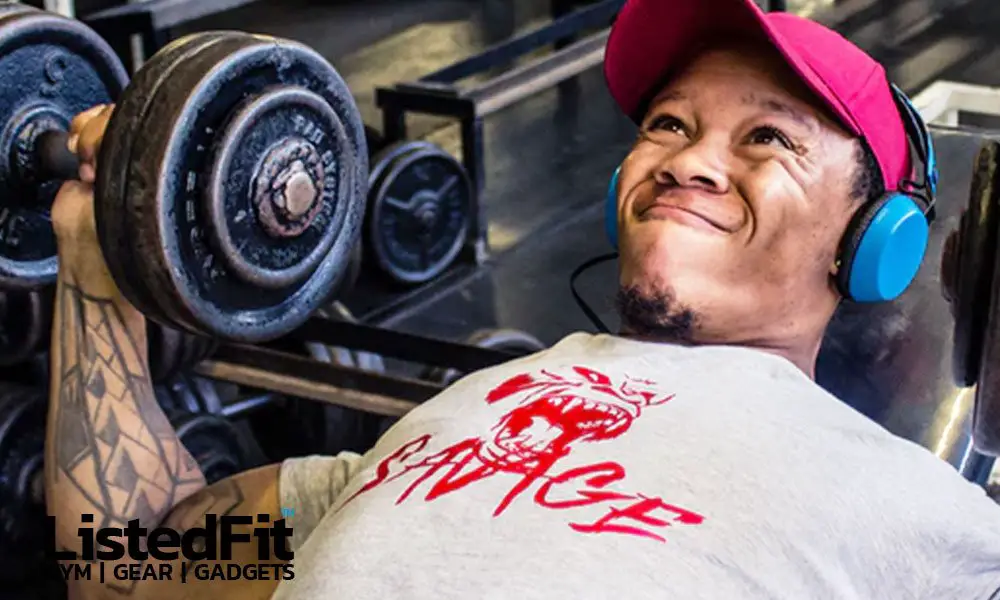
Incorporating active recovery days into your routine can also be beneficial. Active recovery involves low-intensity exercises, such as walking, swimming, or gentle yoga, that help promote blood flow and ease muscle stiffness without adding additional strain. This type of activity can aid in flushing out waste products accumulated during intense exercise and promote a quicker recovery.
Remember, everyone’s body is different – so tailor your recovery strategy to suit your individual needs. By prioritising rest and recovery, you’ll ensure that the next time you go to the gym you’ll be more ready to smash your goals.
It’s important to listen to your body and avoid pushing yourself too hard during your workouts. Over-training can lead to a detrimental cycle where your body never fully recovers, resulting in decreased performance, higher risk of injury, and possibly even burnout. To prevent this, ensure you’re taking adequate rest days between intense workout sessions and consider incorporating mindfulness techniques, such as meditation or deep breathing exercises, to help manage stress.
Nutrition for Recovery
When you’re looking for ways to recover quicker from DOMS, nutrition plays a crucial role. In order to optimise your recovery, here are some tips to keep in mind:
Firstly, remember to stay properly hydrated. Drinking enough water is essential, but don’t forget to replenish your electrolytes too. Coconut water is a natural and delicious source of potassium, sodium, and magnesium, which are vital for muscle function. No need to be fancy, just keep sipping away throughout the day.
Now let’s talk about protein. You want to aim for a steady protein intake every 3-4 hours to maximise muscle repair. Whey protein is a fantastic source, rapidly absorbed and loaded with all the essential amino acids. Adding a scoop to your post-workout shake can really make a difference.
Carbs are important too! They help replenish the glycogen stores in your muscles that are zapped during exercise. Add some healthy and complex carbs to your plate like sweet potatoes, brown rice, or wholegrain pasta. Your muscles will appreciate it!
Next up, some special recovery foods. Tart cherry juice has been found to reduce muscle pain and inflammation, so enjoying a glass on your rest day could be beneficial. Another powerhouse food is avocado – packed with healthy fats, potassium, and fibre, it’s the ultimate recovery friend. Feel free to add it to your salads, smoothies, or just smash it on toast!
Stretching and Massage Techniques For DOMS
Incorporating stretching and massage techniques into your recovery routine can help you bounce back from DOMS faster. These methods not only feel great but are also effective in reducing muscle soreness, increasing blood flow, and improving your range of motion.
Start with light stretches before and after your workout. Keep it gentle and avoid overdoing it, as this can sometimes worsen your DOMS. Focus on keeping your muscles relaxed and hold each stretch for about 30 seconds. Remember to breathe, and don’t forget to stretch from head to toe—beginning with your neck and shoulders, moving down to your legs and feet.
Another useful tool you have at your disposal is a massage gun. This nifty device works by sending targeted pulses into your muscles, increasing blood flow and accelerating the healing process. When using a massage gun, start at a low setting and gradually increase the intensity as needed. In addition, you can vary the type of attachment head to target different muscle groups for maximum relief.
Keep in mind that consistency is key. Incorporate these stretching and massage techniques into your regular routine to prevent and manage DOMS effectively. As you become more familiar with your body and its limits, you’ll be able to enjoy your workouts and recover faster, ready to tackle your next fitness challenge.
Other Remedies and Treatments to Heal DOMS Faster
While resting and properly hydrating are both important aspects of recovering from DOMS, there are other remedies and treatments that can help you alleviate the symptoms and get back to your favourite sports more quickly.
Let’s explore some methods that can be helpful in reducing DOMS pain, speeding up post-exercise recovery, and improving your overall performance.
Foam rolling: Gently use a foam roller on your sore muscles to smooth out the connective tissue (fascia), which can become bound together after intense exercise sessions. This can ease tightness and improve blood flow to the affected areas, helping reduce inflammation and soreness. Just remember not to overdo it, as applying too much pressure can exacerbate the situation.
Gentle Movement: It can be tempting to stay still when you’re experiencing DOMS, but incorporating some light activity into your day can actually help alleviate symptoms. Try going for a leisurely walk, cycling at a relaxed pace, or doing some gentle stretching. These activities can help stimulate blood flow, reducing pain and inflammation in your muscles.
Heat and Ice Therapy: Applying heat to your sore muscles can help relax and loosen them, promoting better blood flow and reducing pain. Likewise, ice can help numb the area and decrease inflammation. You can alternate between using heat and ice packs throughout the day to find the right combination that works best for you.
Massage: A gentle massage can also help release tension and reduce DOMS pain. Don’t hesitate to ask a partner, friend, or professional therapist for assistance or use a massage gun as suggested above.
Just remember to keep it light, as a heavy or intense massage could exacerbate your symptoms.
Anti-Inflammatory Aids: Over-the-counter anti-inflammatory medicines, such as ibuprofen, can help reduce pain and inflammation associated with DOMS. Alternatively, you can also incorporate certain food items rich in natural anti-inflammatory compounds, such as omega-3 fatty acids from fatty fish (e.g., salmon) or antioxidants from fruits and vegetables, into your diet.
Incorporating these remedies and treatments into your post-exercise recovery routine can help you bounce back from DOMS faster. So next time you push yourself hard in your sport or workout, give these methods a try and see if they work for you.
Supplements for DOMS Relief
Let’s discuss some supplements that could give you relief from DOMS.
Remember, these are suggestions, so take them into account while keeping your specific situation and needs in mind.
First up, magnesium plays a vital role in muscle function. Since low magnesium levels are associated with muscle cramps and discomfort, ensuring you’re getting enough magnesium can help alleviate DOMS symptoms.
You can either consume magnesium-rich foods, such as leafy greens, nuts, and seeds, or you can opt for a supplement if you struggle to get enough from your diet.
I personally find that my sleep quality improves a lot when I have more magnesium in my diet, and getting good sleep is a major key to getting relief from DOMS.
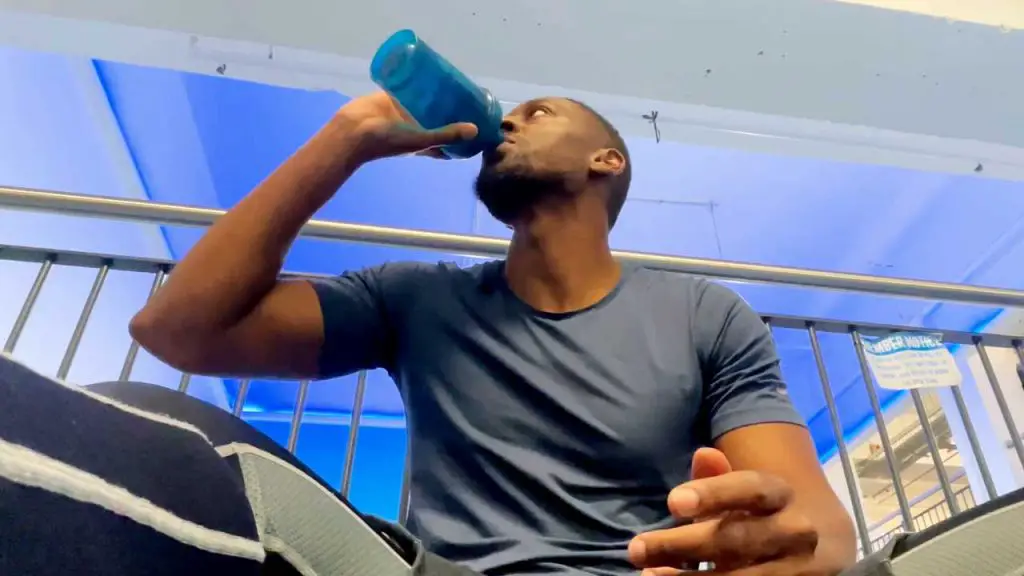
Now, don’t forget to drink water! It might seem obvious, but staying hydrated is crucial to keeping your muscles healthy. Dehydration can exacerbate muscle soreness, so guzzle down some H2O to help minimise the effects of DOMS.
For added recovery benefits, consider sipping on fresh coconut water or an electrolyte drink post-workout.
If you fancy a relaxing bath, try adding some Epsom salts. These salts are rich in magnesium and can help soothe your achy muscles.
Just dissolve a cup or two in a warm bath and soak for about 20 minutes. It’s a great way to unwind and may even promote better sleep, which is key to your body’s recovery process.
Frequently Asked Questions
What helps with DOMS recovery?
To speed up your DOMS recovery, consider light exercises, such as walking, yoga or gentle stretching, which can help improve blood flow and reduce muscle stiffness.
You might also benefit from taking a warm bath with Epsom salts, using compression clothing, or getting a massage to alleviate soreness.
Can you exercise with DOMS?
Yes, you can exercise with DOMS, but it’s not going to be pleasant at the start, but once the blood gets flowing you should be OK.
Choose low-impact, low-intensity activities and avoid working the same muscle groups that are sore until the discomfort subsides.
Remember to take it easy, gradually increasing the intensity as your muscles recover.
How long does DOMS usually last?
DOMS typically lasts between 24 to 72 hours but can sometimes persist for up to a week.
The duration varies depending on factors like your fitness level, the intensity of your workout, and the type of exercise.
With time and consistent training, DOMS usually becomes less severe as your body adapts.
Which foods aid in DOMS recovery?
To help recover from DOMS, eat a well-balanced diet with foods rich in protein, carbohydrates and healthy fats.
Focus on protein sources like chicken, fish, and legumes for muscle repair, and anti-inflammatory foods such as berries and leafy greens to combat inflammation.
Stay hydrated and make sure you’re getting adequate electrolytes to improve your overall recovery.
What causes muscle soreness after exercise?
Muscle soreness occurs due to microscopic damage done to your muscle fibres during exercise.
This is especially true for activities that involve eccentric contractions, like weight lifting or jogging downhill.
Your body then responds to this damage by initiating a series of complex cellular processes that lead to inflammation and result in DOMS.
Best ways to treat DOMS in arms?
To treat DOMS in your arms, start with light stretching and gentle movements to encourage blood flow and ease stiffness.
Apply ice packs to reduce inflammation and swelling or try using a foam roller or massager to release muscle knots and improve circulation.
Also, consider incorporating restorative exercises like yoga or pilates to encourage muscle recovery.
Author
-
Stuart Patrick is a health and fitness lifestyle journalist who writes for ListedFit.com.
“I've spent a lot of time trying to get in shape and change my body and I realised there are so many untruths in the health and fitness industry that can slow down or stop your progress, so I share my knowledge and experience to help others to cut through the BS.”
Latest entries
 MacaMarch 17, 2024Which is Better: Black or Red Maca? Comparing Benefits and Uses
MacaMarch 17, 2024Which is Better: Black or Red Maca? Comparing Benefits and Uses FitnessFebruary 18, 2024Join the Discount Club Today!
FitnessFebruary 18, 2024Join the Discount Club Today! KitchenFebruary 5, 2024Best Almond Milk-Making Machines 🥛 Cheap vs Expensive?
KitchenFebruary 5, 2024Best Almond Milk-Making Machines 🥛 Cheap vs Expensive? Barefoot ShoesDecember 18, 2023Can Barefoot Shoes Be Bad for You? Exploring the Potential Downsides
Barefoot ShoesDecember 18, 2023Can Barefoot Shoes Be Bad for You? Exploring the Potential Downsides
Affiliates:
This post may contain affiliate links that at no additional cost to you, the site may earn a small commission. We only recommend products we would use ourselves and all opinions expressed on this site are our own.
General Advice:
The information provided in this article is for general informational purposes only. It is not intended as a substitute for professional advice. Always consult with a qualified healthcare professional before starting any new diet, exercise program, or making changes to your health routine.
Accuracy Advice:
While we strive to provide up-to-date and accurate information, the content in this article may not reflect the most current research or medical guidelines. We encourage readers to do further research and consult with professionals for more personalized advice.
Our Recommendations:
The products and services mentioned in any of our articles are recommended based on our independent research and personal experience. We are not sponsored by any company. We aim to suggest products and services we believe are of high quality and could be beneficial to our readers.

